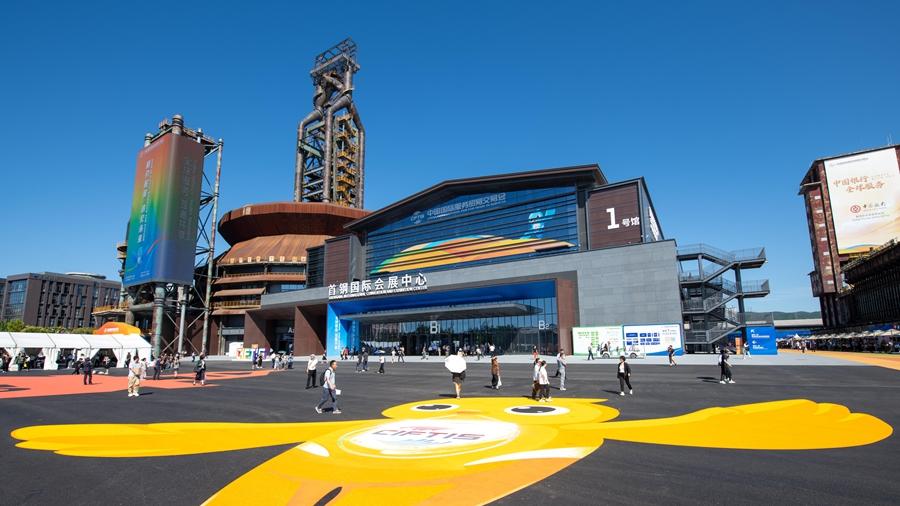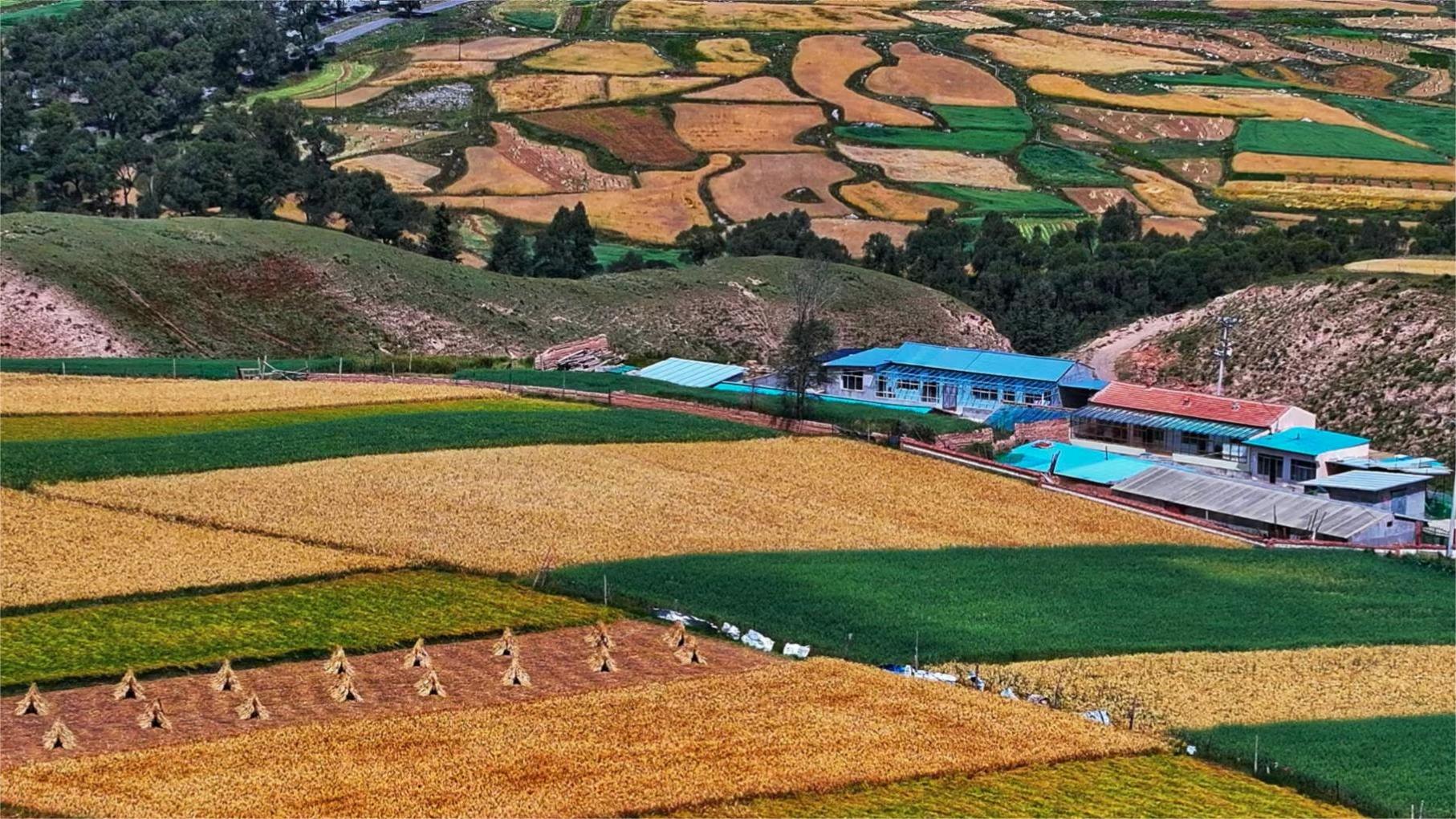Inner Mongolia makes significant progress in desertification control
Since the 18th National Congress of the Communist Party of China (CPC) in 2012, north China's Inner Mongolia Autonomous Region, the main battlefield for the nation's desertification efforts, has carried out holistic conservation and systematic governance of mountains, rivers, forests, farmlands, lakes, grasslands and deserts. These efforts have led to a continuous increase in forest coverage and the vegetation coverage of grasslands, as well as a decrease in the areas of desertified and sandified land.
The autonomous region has achieved the historic transition from "desert displacing humans" to "green replacing deserts" in key ecological rehabilitation areas.

Photo shows the site of the comprehensive treatment project of desertification in the Cuocaoshan zone of the Hunshandake Sandy Land, Hexigten Banner, Chifeng city, north China's Inner Mongolia Autonomous Region. (Photo/Zhang Cheng, Sun Peng)
In 2023, Inner Mongolia completed desertification control work involving 9.5 million mu (633,333 hectares) of land, 1.5 times the initial target it set at the beginning of the year, ranking first nationwide, said Wang Zhaosheng, director of the regional forestry and grassland bureau.
Building on this momentum, the autonomous region has treated 15.65 million mu of sandified land this year, accounting for 90 percent of its annual goal of 17.3 million mu, Wang added.
To witness the dramatic changes firsthand, one can take a drive along a cross-desert road in Ongniud Banner, Chifeng city. The road is flanked by a verdant tapestry of plants, such as Mongolian scotch pines, Salix gordejevii, and Korshinsk pea shrubs, which grow in straw checkerboard sand barriers. It's hard to imagine that the road is located in the Horqin Sandy Land.
Situated on the western fringe of the Horqin Sandy Land, Ongniud Banner has long grappled with the challenges of desertification. With 6.67 million mu of sandified land, which accounts for 37.4 percent of its total area and 12.2 percent of the Horqin Sandy Land, the banner has the largest sandified land and is facing most challenging task of desertification control in all of Chifeng.
After years of trial and error, the banner has hit upon a novel road-based desertification control model.
"Wherever we build roads, we establish straw checkerboard sand barriers and plant trees. This approach not only facilitates the transport of sand control materials and machinery into the heart of the desert but also connects isolated communities in sandy areas with the outside world," said Wu Hua, deputy director of the banner's forestry and grassland bureau.

Photo shows the site of a comprehensive treatment project of desertification in Ongniud Banner, Chifeng city, north China's Inner Mongolia Autonomous Region. (Photo courtesy of the publicity department of the Communist Party of China Ongniud Banner committee)
Since 2003, this strategy has led to the construction of 16 cross-desert roads spanning a total of 479.5 kilometers, enabling the treatment of 3.51 million mu of sandy land on both sides of these roads, Wu noted.
In addition, the banner has pioneered a desertification control model based on work-relief programs in Inner Mongolia.
This innovative scheme, featuring cooperation among Party branches, cooperatives, farmers and herdsmen, has fostered community engagement in sand control efforts while simultaneously boosting the incomes of farmers and herdsmen.
Today, cross-desert roads have become veritable roads to prosperity for farmers and herdsmen, and they, together with village collectives, have become direct beneficiaries of desertification control projects thanks to work-relief programs, according to Zhang Jiupo, a member of the Standing Committee and head of the organization department of the CPC Ongniud Banner committee.
To date, nine work-relief programs have been implemented in the banner, engaging over 2,600 farmers and herdsmen in completing the treatment of 62,000 mu of sandy land, with their per capita income increasing by more than 2,000 yuan ($280.75).
In the repeated trial of strength with sand over the past years, places across Inner Mongolia have developed successful desertification schemes, such as the road-based desertification control model, the Kubuqi model, the Dengkou model, and desert control with photovoltaic (PV) arrays.
Hexigten Banner in Chifeng has adopted a science-based approach, combining mechanical desertification control with strategic planting of trees, shrubs, and grasses tailored to actual conditions.

Sand control workers plant Korshinsk pea shrubs in Xini town, Hanggin Banner, Ordos city, north China's Inner Mongolia Autonomous Region. (Photo/Zhang Cheng, Ge Haoyu)
Hexigten Banner is home to over 8.66 million mu of the Hunshandake Sandy Land, making up 16.8 percent of the total area of the sandy land, of which the contiguous area of extremely severe desertified land is mainly distributed in the Cuocaoshan zone.
From the end of August 2023 to the end of June 2024, Hexigten Banner completed desertification prevention and control missions on 126,500 mu of land for the comprehensive treatment project of desertification in the Cuocaoshan zone of the Hunshandake Sandy Land ahead of schedule. The task was originally slated for two years.
This year, Hexigten Banner has implemented seven desertification control projects, treating 895,000 mu of sandy land.
Focusing on the Three-North Shelterbelt Forest Program, Inner Mongolia has pooled resources to launch large-scale desertification prevention and control in key areas according to local conditions, implemented a number of major desertification control projects, and accelerated the systematic governance of desertified and sandified land.
To improve the comprehensive benefits of desertification control, Inner Mongolia has insisted on combating desertification and creating economic benefits by developing industries in recent years. It has selected plant species with both ecological value and economic value according to actual conditions, and actively developed the forestry, grassland and sand industry.
Last year, the total output value of the sector reached a whopping 87.18 billion yuan, marking a year-on-year increase of 26.86 billion yuan from the previous year.
Photos
Related Stories
- Large molybdenum deposit discovered in north China
- Breathtaking sunrise at the Greater Khingan Mountains, NE China's Inner Mongolia
- Scenery of Badain Jaran Desert in Inner Mongolia
- Dike breach sealed in north China's Inner Mongolia
- China’s Badain Jaran Desert: A must-visit wonder on the UNESCO World Heritage List
Copyright © 2024 People's Daily Online. All Rights Reserved.









